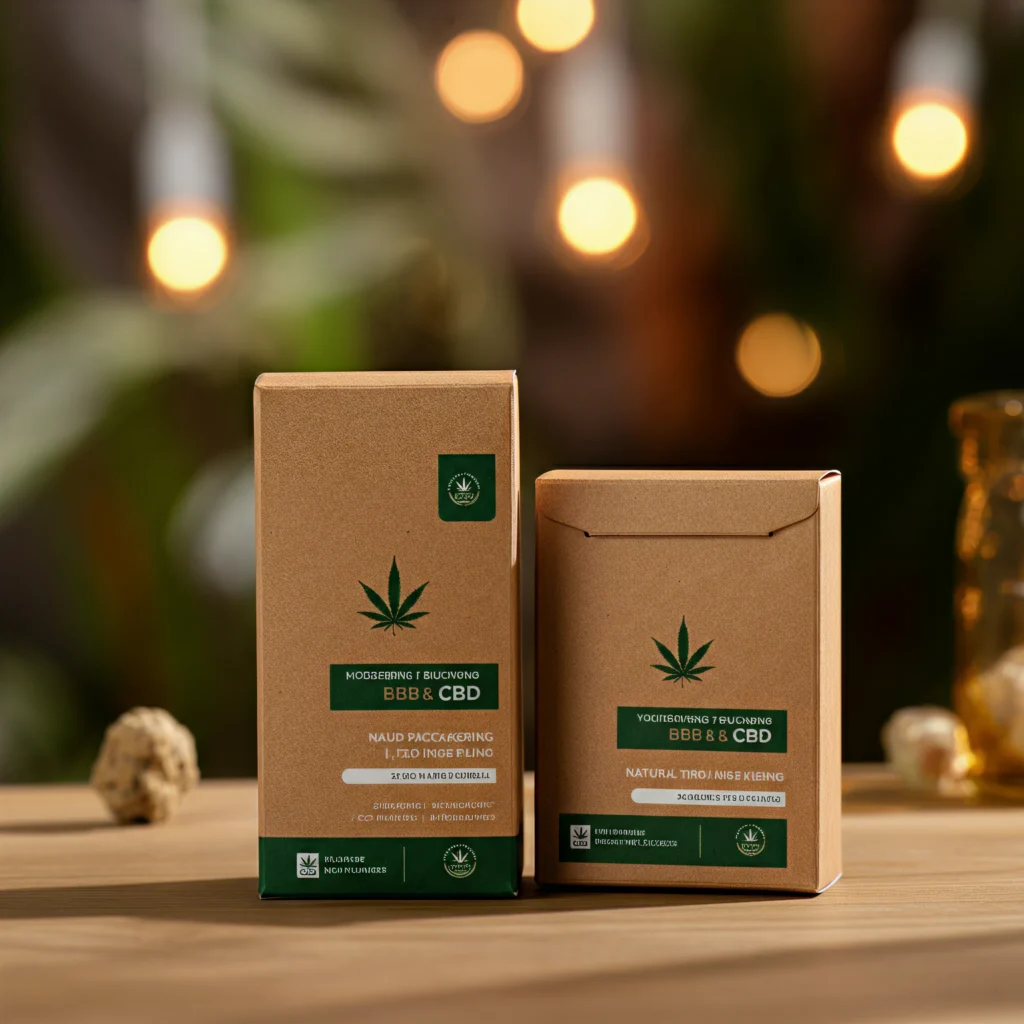The growing popularity of CBD products has led to increased competition in the market, and one crucial factor in standing out is packaging. Packaging not only protects CBD products but also plays an essential role in attracting customers and conveying your brand identity. Choosing the right materials for CBD packaging boxes is key to ensuring your products are safe, visually appealing, and environmentally responsible.
Whether you’re a CBD business owner, a packaging designer, a marketing professional, or a manufacturer in the CBD space, this guide will help you understand the best materials for custom CBD packaging. We’ll explore their pros, cons, and applications so you can make informed decisions to best showcase your products.
The Importance of CBD Packaging
Packaging is much more than just a container for your products. It serves several critical purposes, including:
- Protection: Proper materials protect CBD products from damage, contamination, and exposure to sunlight or moisture that can compromise product quality.
- Compliance: Packaging must meet legal standards, such as including ingredient lists, THC levels under 0.3%, and child-resistant features.
- Marketability: Attractive packaging influences purchase decisions and enhances your brand’s image.
According to Ipsos research, 72% of Americans say product packaging impacts their purchasing decisions, making it a pivotal factor in CBD sales.
Common Materials Used for CBD Packaging
1. Cardstock
Cardstock is a popular material for CBD packaging. It offers durability along with flexibility for custom designs.
- Pros:
- Lightweight and cost-effective.
- Ideal for designs like folding cartons.
- Suitable for small to medium-sized products like tincture bottles or edibles.
- Cons:
- May not withstand heavy loads or wet conditions.
- Limited protection for fragile items.
2. Kraft Paper
Kraft paper is an eco-friendly option that aligns with the sustainability values many CBD brands advocate.
- Pros:
- 100% recyclable and biodegradable.
- Natural, earthy aesthetic appeals to eco-conscious customers.
- Durable enough for lightweight products.
- Cons:
- Limited moisture resistance.
- Not ideal for heavy or high-value products.
3. Corrugated Cardboard
For shipping and heavier CBD product packaging, corrugated cardboard is the go-to choice.
- Pros:
- Strong and durable for shipping fragile items like CBD oil bottles.
- High shock absorption protects products in transit.
- Recyclable and sustainable.
- Cons:
- Bulkier than other options.
- Higher costs compared to lighter materials.
4. Rigid Boxes
Rigid boxes convey luxury and durability, making them a favorite for premium CBD products.
- Pros:
- Exceptional sturdiness and elegance.
- Perfect for upscale packaging, such as CBD gift sets.
- Adds a premium feel to your brand.
- Cons:
- High production cost.
- Less eco-friendly unless made with recycled materials.
5. Glass
Glass is preferred for CBD oils, tinctures, and creams, ensuring product integrity over time.
- Pros:
- Excellent for maintaining freshness and avoiding chemical leaching.
- Reusable and recyclable.
- Highly durable and gives a sleek, premium touch.
- Cons:
- Heavier, leading to higher shipping costs.
- Fragile and prone to breakage without protective packaging.
6. Flexible Pouches (Stand-Up Pouches)
Flexible pouches are ideal for edible CBD products like gummies or powdered supplements.
- Pros:
- Lightweight and takes up less space.
- Available with resealable closures for convenience.
- Multiple layers for better moisture and odor barrier.
- Cons:
- Less environmentally friendly unless compostable materials are used.
- Not suitable for fragile items.
Factors to Consider When Choosing CBD Packaging Materials
When selecting materials for CBD packaging boxes, keep the following factors in mind:
1. Product Type
- Oils and tinctures benefit from glass packaging with protective paperboard boxes.
- Edibles, like gummies or snacks, do well in pouches or tins.
- Cosmetics, such as creams or balms, might use jars or rigid boxes for added appeal.
2. Brand Image
- Kraft paper is excellent for brands emphasizing sustainability.
- Rigid boxes are perfect for luxury or premium CBD brands.
3. Compliance
- Always follow state and federal guidelines for CBD packaging, including labels, ingredient lists, and child-resistant closures. Legal compliance is non-negotiable.
4. Sustainability
- Use recyclable or biodegradable materials to appeal to eco-conscious consumers. Investing in sustainable packaging reflects positively on your brand.
5. Budget
- Balance aesthetics, functionality, and costs when choosing materials. For example, cardstock offers affordability, while rigid boxes and glass provide luxury value at a higher cost.
Case Studies of Successful CBD Packaging
Here are examples of brands leveraging innovative materials for successful CBD packaging:
1. Charlotte’s Web
Charlotte’s Web uses glass bottles protected by kraft paperboard boxes for their CBD oils. This pairing promotes sustainability while ensuring product protection.
2. Lord Jones
This premium CBD brand uses rigid boxes with intricate designs for edibles and skincare products, giving their products an elevated, high-end look.
3. Wyld CBD
Wyld CBD uses colorful, compostable flexible pouches that align with their eco-friendly ethos, catering to environmentally conscious customers.
Trends and Innovations in CBD Packaging Materials
1. Sustainable Options:
More brands are turning to biodegradable and post-consumer recycled materials. Kraft paper and plant-based plastics are becoming popular.
2. Smart Packaging:
QR codes on packaging allow customers to access product details, batch information, and lab results, improving transparency and consumer trust.
3. Minimalist Design:
Clean, minimal aesthetics blend functionality with modern design. It’s both trendy and highly effective for grabbing attention on shelves.
4. Custom Influences:
Incorporating tactile finishes (embossing, debossing) or specialty materials (velvet-textured coatings) adds a sensorial experience to packaging.
Wrap-Up and Recommendations
To summarize:
- Cardstock and kraft paper are cost-effective and versatile options for lightweight products.
- Corrugated cardboard is ideal for shipping and heavy-duty protection.
- Rigid boxes and glass are perfect for premium, fragile, or high-end CBD offerings.
- Flexible pouches cater to easy storage, transport, and resealability for edibles.
Final tip: Take your packaging strategy to the next level by ensuring that materials align with product needs, consumer behavior, and sustainability values. And remember, “The packaging is the first interaction your customer has with your product. Make it count.”
If you’re ready to design custom CBD packaging that sets your products apart, explore options with state-of-the-art customization tools and expert guidance.

